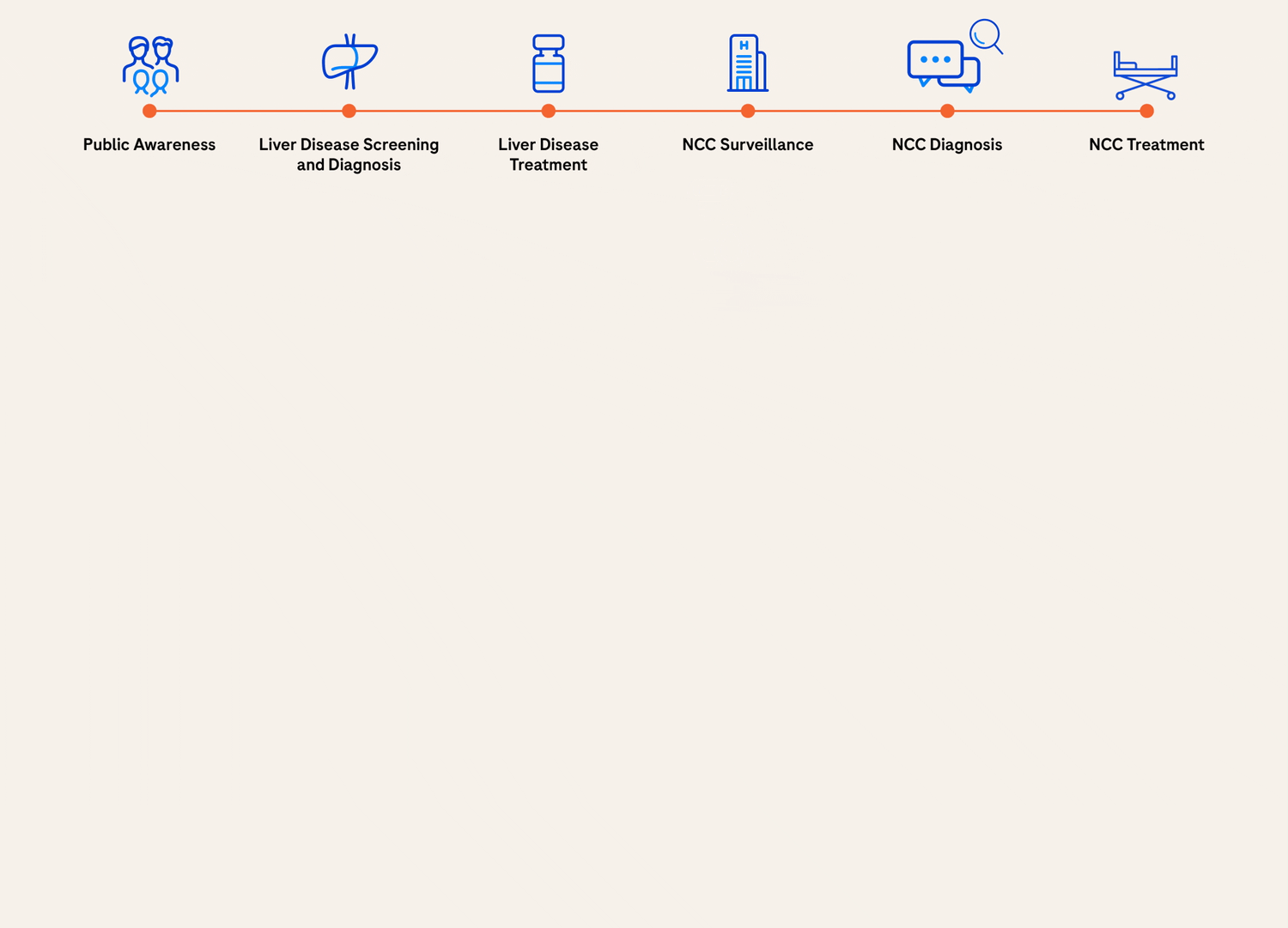Hepatocellular carcinoma (HCC) is largely preventable, with decades of time to intervene, yet millions still die from it. It is however not incomprehensible why this happens. The journey from liver disease to liver cancer is complex—a myriad of broken healthcare systems, patient behaviors, cultural influences, stigma, funding, and limited healthcare professional (HCP) capacity. At first glance, it seems overwhelming, leaving us with the question—where should we intervene?
Some cancers like breast cancer have high incidence but comparatively low mortality1. Liver cancer is the opposite; it often goes undetected until it reaches a late stage, resulting in dismal prognosis. Late presentation is a top issue in liver cancer. Without pain receptors, the liver has minimal symptoms until it is damaged beyond cure. People usually die within 6 – 22 months of a late-stage HCC diagnosis.2 HCC is known as the ‘silent killer’ and is typically diagnosed at a late stage, which has a <5% 5-year survival rate. If diagnosed early, the 5-year survival rate increases to 40 – 70%.3&4
Given the complexity, there is no single solution. Rather, it will take concerted action from multiple stakeholders in the system to bring about positive change. That said, there are logical places to start. First, we need to understand the ecosystem. An ecosystem represents factors required to deliver a service, in this case, liver care. It helps identify solution, scope, and strategy by providing a holistic view of actors, processes, flow, influence, and relationships.
Hepatitis B and C are the major causes of chronic liver disease and liver cancer in the world. An ongoing infection causes inflammation in the liver. This extended inflammation can cause scarring, called cirrhosis, and can ultimately lead to liver cancer. The Asia-Pacific region bears the highest overall burden of HBV, with 59% of those living with chronic HBV, 26% of new infections, and 79% of deaths.5 Given the shifting etiology with rising fatty liver disease, there is a pressing need to re-assess risk factors and stratify patients to ensure we are not failing to detect. Being able to optimize surveillance protocols based on patient risk will improve efficiency and ability to catch early HCC and drastically improve survival.
To further maximize the benefit of a surveillance program, or any other initiative, it is important to consider surrounding opportunities up- and down-stream. For example, surveillance programs will benefit from upstream awareness efforts to improve throughput, and down-stream availability of treatments. This paper provides an appreciation for the end-to-end patient journey and their needs along the way. Fundamentally, it advocates for the improvement of human life in the midst of receiving liver care, both clinically and experientially.

From the research, a central theme emerged – ultrasound used in HCC surveillance is a major bottleneck. It is the cause of delayed or even missed diagnosis, and stark inequities in care. Biomarkers such as PIVKA-II complementing AFP show promise in lessening this problem while also offering improved sensitivity and specificity for HCC detection.
This White Paper intends to facilitate concerted action among HCPs, patient advocacy groups, payers, and policy makers to reduce liver cancer incidence and mortality in APAC. It shares both holistic ecosystem and detailed human-centric insights as a starting point for change. Working with Key Opinion Leaders (KOLs) we provide tangible examples of active initiatives, and recommendations for taking the next steps.
Download or read the white paper below to find out more.
Stay tuned for interviews with select KOLs featured in the white paper, as they share about their insights and learning points on the initiatives piloted in their country.
References:
- World Health Organization. Liver Globocan 2020 [Internet]. [cited 2023 May 18]. Available from: https://gco.iarc.fr/today/data/factsheets/cancers/11-Liver-fact-sheet.pdf
- Mortality evaluation and life expectancy prediction of patients with Hepatocellular carcinoma with data minding [Internet]. 2022 [cited 2023 May 3]. Available from: https://www.researchsquare.com
- El-Serag HB et al. Surveillance for hepatocellular carcinoma: in whom and how? Ther Adv Gastroenterol 2011; 4: 5–10
- Kao, Wei-Yu et al. “Prognosis of Early-Stage Hepatocellular Carcinoma: The Clinical Implications of Substages of Barcelona Clinic Liver Cancer System Based on a Cohort of 1265 Patients.” Medicine vol. 94,43 (2015): e1929
- https://www.amfar.org/news/treat-asia-responds-to-hepatitis-b-public-health-emergency/#:~:text=The%20Asia%2DPacific%20region%20bears,%2C%20and%2079%25%20of%20deaths.